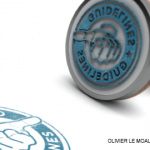
PARIS, FRANCE—The amount of collaboration between the American College of Rheumatology and the European League Against Rheumatism, as well as other international groups, is likely to continue to grow when it comes to creating criteria and response sets, and patient management guidelines, said Kenneth Saag, MD, MSc, professor of medicine at the University of Alabama at Birmingham, a member of the ACR Board of Directors, and a leader in the writing of the ACR’s most recent RA management guidelines.
There are hurdles to overcome, however, not the least of which is the different healthcare systems involved, Dr. Saag said in a session on RA management guidelines throughout the world at the Annual European Congress of Rheumatology (EULAR 2014) in June. His talk also delved into the philosophy behind guideline creation and touched on future additions to ACR guidelines.
As for international cooperation, ACR and EULAR have already collaborated on remission criteria, and they jointly developed classification criteria on polymyalgia rheumatica (PMR), which were presented this year at another EULAR session.
Dr. Saag said the presentation of the PMR guidelines made it a “pivotal meeting” for joint guideline efforts.

“It’s also important to highlight that the joint activity between ACR and EULAR along classification response criteria has been ongoing quite successfully for many years,” he said.
He said he’d like more collaboration not just with EULAR but other large, international organizations, too. But with such factors as “institutional politics,” it can be a “complicated” endeavor.
“Trying to just maintain the flow with EULAR is challenging for both sides—to deal with financial models, to deal with conflict issues, to deal with different healthcare systems,” he said. “And that’s where I think it’s been a little more challenging for guidelines. But it doesn’t mean we can’t do it, and in fact we have momentum. This is a positive sign.”

Early Days
Josef Smolen, MD, chair of the Division of Rheumatology at the Medical University of Vienna, said it was worth remembering that efforts at collaborating are only 10 years old. He said it was 2003 when he suggested that the ACR and EULAR start working together.
“It took a few years to get it off the ground,” he said. “And I find it fantastic that we already have so many common activities. And not only activities, but results.”
He acknowledged the difficulties.
“We in Europe cannot understand that something that [we’ve had for] 120 years is only being debated in the United States,” he said. “So there are these differences in healthcare systems.”
Constant Change
In his remarks about the ACR guidelines, Dr. Saag described a constant state of reexamination—evidence changes or emerges and methods of creating the guidelines change, leading to adaptations that are always attempting to keep pace with the medicine.
One difference between the ACR guidelines and the EULAR guidelines is that when the first conventional synthetic disease-modifying antirheumatic drug (DMARD) fails, the ACR guidelines call for adding or switching to an anti-TNF, mainly advocating anti-TNF monotherapy. The EULAR guidelines call for combining biologics with conventional DMARDs.
But Dr. Saag said the ACR guidance might change since new evidence has emerged.
“Based on the evidence as it was reviewed by the group at this time, there was a preference” for initially using an anti-TNF, Dr. Saag said. “It is conceivable, based on newer studies, that recommendations very well may shift.”
Also, the ACR guidelines have not included guidance on the use of glucocorticoids, as the EULAR guidelines do, but they will be covered in the 2015 guidelines, Dr. Saag said.
“We heard loud and clear from many in this room and throughout the world about the need to bring glucocorticoids in, and that will happen,” Dr. Saag said.
Other new additions in the 2015 guidelines will be tofacitinib; new or updated safety considerations on prior cancer, prior infection, vaccination and tuberculosis; treat-to-target strategies; and approaches to tapering off therapy.
Also, he said, “We’re working hard to figure out how to incorporate, in a very rigorous way, the economic considerations. That’s really been one of our challenges.”
We in Europe cannot understand that something [we’ve had for] 120 years is only being debated in the United States.
Not a Cookbook
Dr. Saag also addressed a few common complaints about the guidelines.
One of those, he said, is the view that the guidelines don’t reflect the complexity that’s actually seen in patient care. But he said doing so is “simply not possible and the literature doesn’t support all the things we do in practice.” Plus, he said, the guidelines incorporated 500 different clinical scenarios using a former ACR method, and adding any more might lead to fatigue among the panelists.
He added that they are only recommendations and are “not intended to be a cookbook.”
Another complaint is a concern that the guidelines will be misused by lawyers and insurance companies making reimbursement decisions.
Why Do It?
Dr. Saag said a lot of entities come up with documents on the appropriateness of care, making it important that a document by rheumatologists themselves also be created.
“If we don’t do this well ourselves,” he said, “other people are going to do this for us, and not as [rigorously], focused exclusively on cost rather than cost effectiveness.”
Thomas R. Collins is a freelance medical writer based in Florida.
![We in Europe cannot understand that something [we’ve had for] 120 years is only being debated in the United States.](https://www.the-rheumatologist.org/wp-content/uploads/springboard/image/RM_2014_09_pp57_04.jpg)

